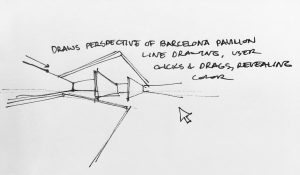For my final project, I want to expand on the work I did in week 9. I will create a photo editor. An editor that applies a multitude of filters to different aspects of the images. It will load an image of the correct size, provide multiple options for editing through a panel of interactive buttons, and will re-display the edited image. Different buttons will edit the composition, color, pixels, and any other edits I can come up with or code. I plan to create a blur function. A black and white filter. A duotone filter with an attached color editor. A pixelating function. And possibly more I will come up with in the process, this is all I know I can code right now.
I want to also focus on creating a clean and successful UI in p5js to successfully support the code. Something simple but powerful that I will also create descriptive icons to describe the different possible edits that can be made to the image.

![[OLD FALL 2017] 15-104 • Introduction to Computing for Creative Practice](../../../../wp-content/uploads/2020/08/stop-banner.png)





